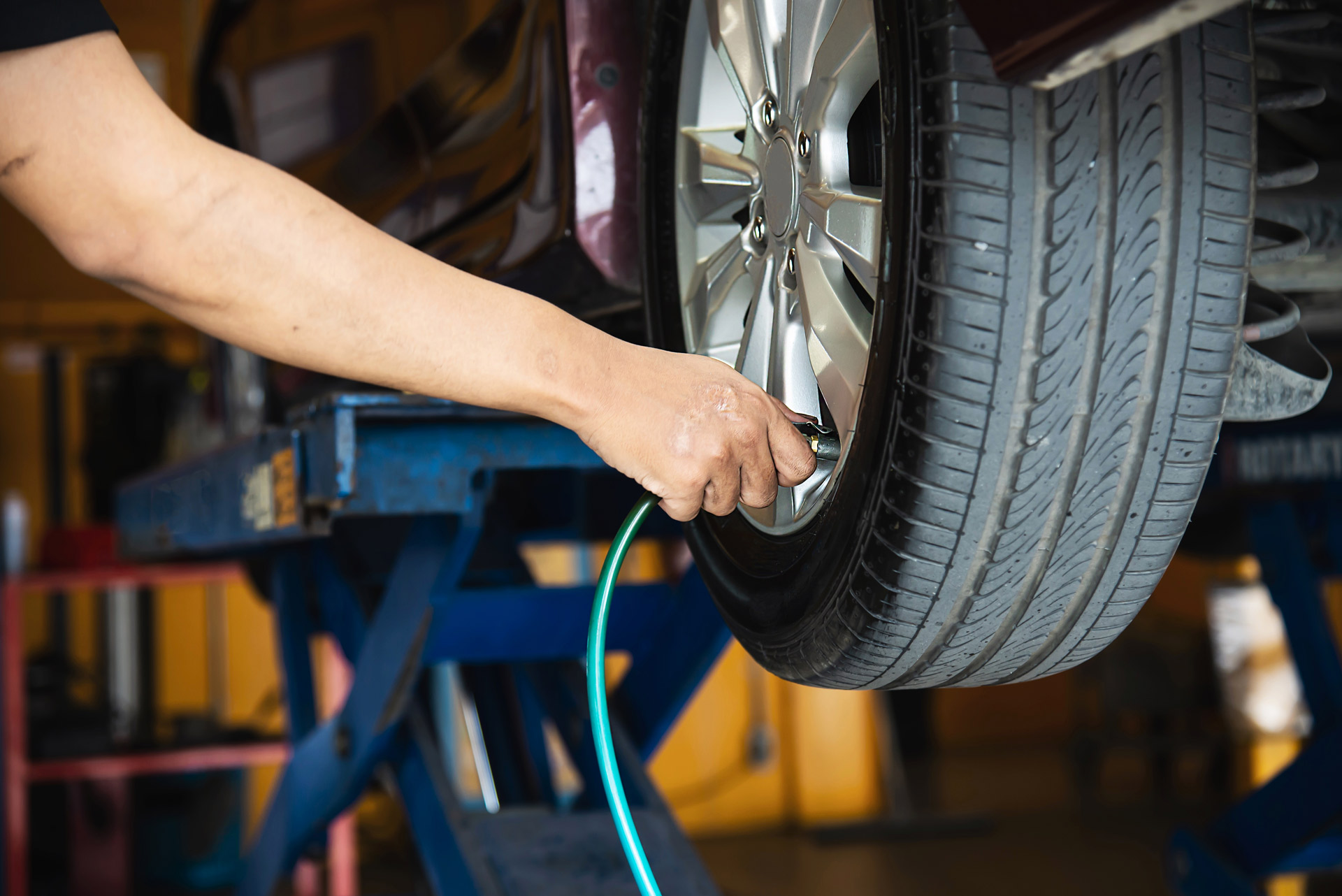

A lift is an invaluable tool your shop will use daily to help you scale your business. Yet, investing in a lift represents a significant investment. Therefore, it’s important to review your options and determine which setup best suits your goals and ambitions.
The guide below explores the differences between the most popular two-post-style lifts: symmetric and asymmetric. This comprehensive review compares basic features, advantages and disadvantages, installation considerations, safety factors, maintenance tips, and common issues you may encounter with each design. As you review each style of lift, you’ll discover what you need to know to make a more informed buying decision and what additional tools – like Identifix’s suite of auto shop management products – prepare your shop for the challenges and success ahead.
The Benefits of Two-Post Car Lifts
Symmetric and asymmetric lifts are the most common two-post-style car lifts you’ll find. As the name suggests, a two-post car lift has half the posts of a four-post lift and features a smaller footprint. However, both two-post and four-post car lifts are frame-engaging lifts, meaning they contact the vehicle’s frame to lift it into the air.
Two-post lifts are common in shops with less space, like a 30×40 shop two-post lift layout, for example. Unlike four-post lifts, they offer unobstructed access to the vehicle’s wheels, which makes services like tire rotations, brake jobs, and suspension work much simpler. Although lifting a car with a two-post lift requires more attention to detail in placing the arms securely for a safe lift, those same arms offer adjustability in placing the lifting points where they’re the safest and most beneficial, depending on what services you perform.
What is a Symmetric Lift?
The dual posts of a symmetric two-post lift are directly opposite one another. From these posts extend four support arms of equal length, which angle inward toward the space between the two posts. The vehicle’s weight is suspended between these two sets of arms, with each side holding about half the overall weight.
Symmetric car lifts can hoist 10,000–20,000 pounds, depending on the specific model and the manufacturer’s recommended lift weight. These two-post lifts are designed to handle heavier, longer-wheelbase vehicles, like SUVs and light-duty pickups. They’re also ideal for rear-engine cars—such as Porsches and older Volkswagens—utility vans full of equipment, and crew-cab trucks.
The beauty of symmetric two-post is the ability to park a vehicle on the lift “backward.” Symmetric lifts also have better drive-through clearance as long as the vehicle fits through the space between the posts. Most symmetric car lifts are also available with an overhead beam or floor plate, so you can tailor the design to fit your space.
Symmetric Lift: Pros and Cons
Equivalent to the standard two-post lift layout, symmetric lifts offer several advantages and disadvantages. Explore the pros and cons of symmetric car lifts below to help you decide which style is best for your application.
Pros
Cons
What is an Asymmetric Lift?
Asymmetric two-post lifts feature dual columns offset at a 30-degree angle, which shrinks its overall footprint. The center of gravity shifts from halfway between the two posts horizontally to the intersection of the angle posts, slightly further back. An asymmetric lift also features four arms, but they’re of unequal length, with the front two measuring shorter than the rear two.
Instead of 50/50, the weight distribution on any asymmetric lift is roughly 30/70, with more weight held by the rear arms than the front. The weight capacity of asymmetric lifts varies from 7,000 to 10,000 pounds. Best of all, asymmetric car lifts provide greater clearance in accessing the interior, even when the vehicle is on the lift.
The Pros and Cons of Asymmetric Lifts
As you review the advantages and disadvantages of symmetric and asymmetric car lifts, which style better aligns with your shop layout? Consider which lift features enable you to streamline daily operations and maximize productivity while enhancing efficiency.
Pros
Cons
Which is Right for Your Shop?
Now that you’ve explored the similarities and differences between symmetric and asymmetric car lifts, it’s time to break down which type best suits your shop. Think about the types of vehicles you’ll be servicing using the lift you’ll purchase, specifically their overall length, wheelbase, and weight. Consider your available shop space and if angled lift towers will increase your rate of return.
Symmetric lifts excel in lifting everything from large, heavy vehicles to those with a shorter wheelbase. Unless you’re consistently working on light-duty pickups and laden-down utility vans, it’s unlikely you’ll max out the weight capacity of this style of two-post lift. However, symmetric lifts do create a pinch point if you need to access the driver’s seat while in the air.
Alternatively, asymmetric lifts create clearance to enable quick access to the interior. These offset two-post lifts also take up slightly less space and better accommodate unbalanced vehicles. Yet the asymmetric lift’s lower weight capacity and increased chances of getting the weight distribution wrong can be a hurdle for technicians who lack experience with this type of lift.
Invest in Your Shop’s Success with the Identifix Product Suite
The best lift for your auto shop setup helps you safeguard against accidents, optimize the available space, and enhance your productivity. Regardless of which style you choose, pair your new two-post lift with exceptional auto shop management tools from Identifix that maximize your potential. Contact us to discover how Identifix products can put your auto shop on the path to success.
Did you like this article? Find more great content at identifx.com/blogs and solera.com/blog.

Identifix is the leading provider of automotive repair shop solutions and sevices designed to improve shop profitability and repair outcomes.
"*" indicates required fields